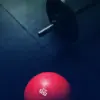Do you need to train to failure? This study tests whether a single set to failure outperforms stopping short by two reps in resistance-trained individuals.
Overview
- What did they test? Eight weeks of single-set resistance training with nine exercises performed either to momentary failure (FAIL) or with two repetitions in reserve (2-RIR).
- What did they find? Training to failure yielded slightly greater hypertrophy and muscle endurance than 2-RIR training, but strength improvements were similar between groups.
- What does it mean for you? Training to failure may not always be necessary and single-set training can increase muscle size, strength, and endurance with only two full body sessions per week, even in trained individuals.
What’s the Problem?
Resistance training (RT) to the point of muscle failure has long been thought as the key to optimizing hypertrophy — until recently 1. In practice, grinding every set to failure increases neuromuscular fatigue, the chance of soreness, and may elevate injury risk 2 3. These limitations pair poorly with real‐world time constraints, which are cited as a common barrier to exercising 4. For example, most multi‐set programs take 45–90 minutes per session, a commitment that may not be feasible for most people, whereas single-set training can shorten gym sessions while still eliciting substantial, albeit lower, hypertrophy compared to multi-set training 5.
The repetitions-in-reserve (RIR) scale provides a validated, practical framework for athletes and coaches to regulate intensity and approximate proximity-to-failure in real time, and is often used in training programs 6. Recent meta‐analytic evidence reveals that, when total volume is equated, stopping just 1–2 repetitions shy of failure elicits hypertrophic and strength adaptations comparable to those achieved at failure 7. However, there may still be an advantage for those who are resistance-trained 8. But without more proximity-to-failure comparisons, non-failure protocols can’t clarify how close to failure you need to push, leaving the optimal RIR unknown. By directly comparing 2-RIR with failure in a single-set context, this study helps clarify the proximity-to-failure threshold needed to optimize muscle hypertrophy.
Purpose
To compare the effects of single-set resistance training performed with either 2-RIR or to failure on muscle adaptations.
Hypothesis
The authors hypothesized there would be no differences between groups (aka null hypothesis).







